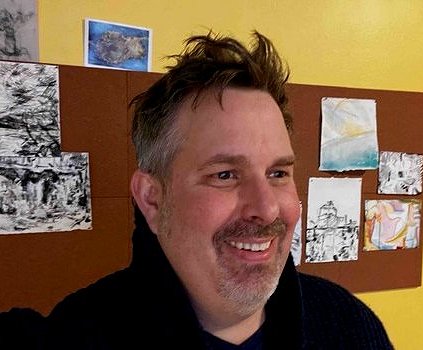ART, WHATEVER IT TAKES
Since the early pandemic in 2020, Rome Art Program has conducted a series of interviews, “Art, Whatever It Takes.”
Artists, Art Critics, and Art Historians living in Italy, the U.S., and U.K., share their insights during these powerful times.

Interview with Daniel Abrams
Daniel Abrams has a BFA from Brandeis University & an MFA from New York Studio School (2005). He has taught in Rome & Corciano Italy, for the Rome Art Program & has exhibited in NYC, Seattle & Vermont. His artist residencies include the Vermont Studio Center & Chautauqua Institution, NY. “Art is a response -he said- an extension of how I see and feel…“
